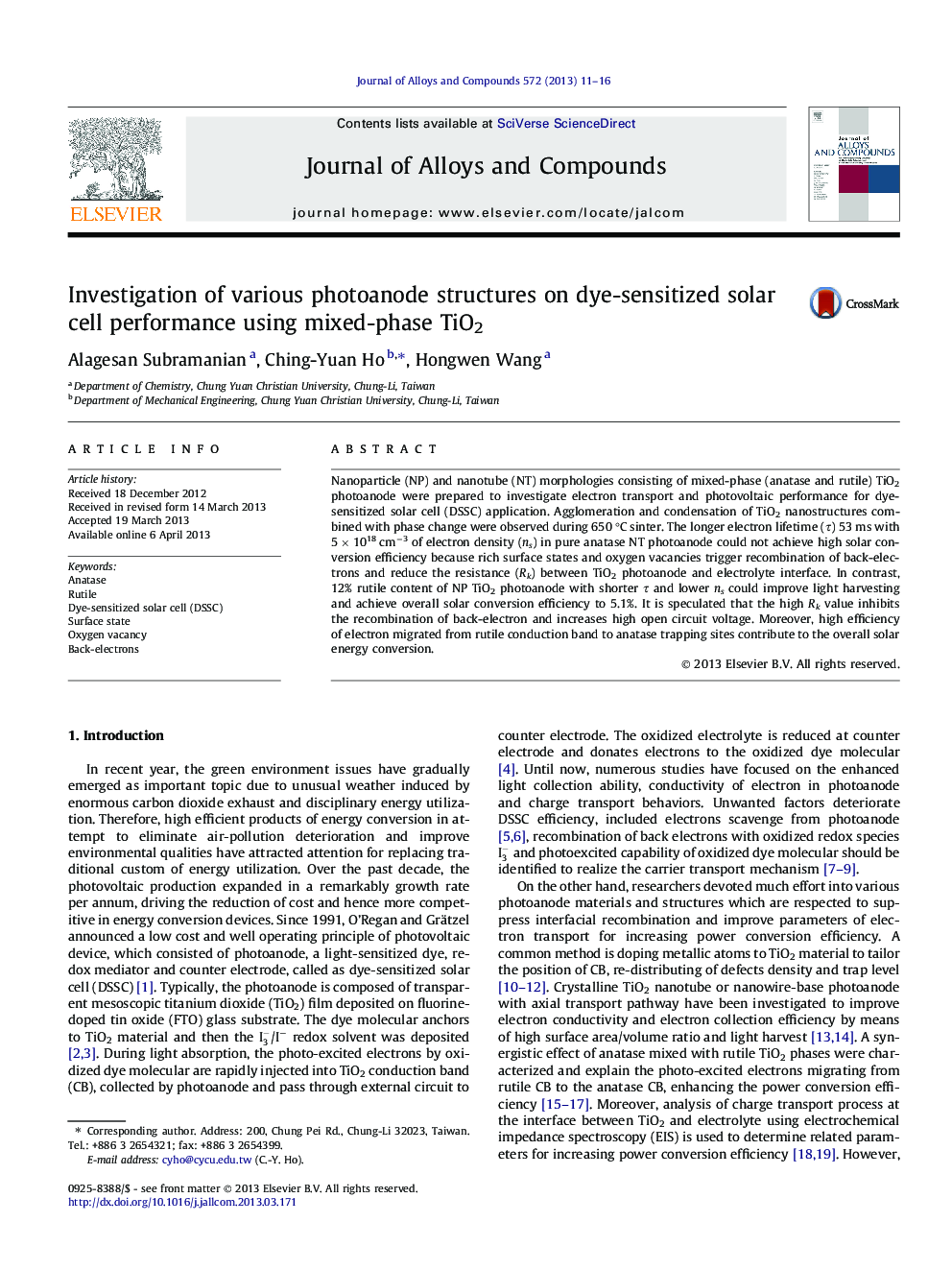| Article ID | Journal | Published Year | Pages | File Type |
|---|---|---|---|---|
| 1613940 | Journal of Alloys and Compounds | 2013 | 6 Pages |
•We investigate the different structures of TiO2 photoanode on DSSC.•12% Rutile of TiO2 nanoparticles improve energy conversion efficiency to 5.1%.•Rich surface states and oxygen vacancies trigger recombination of back-electrons.•Recombination of back-electron decreases Voc and dominates solar cell performance.•Electron migrated from rutile CB to anatase trapping sites obtains good conduction.
Nanoparticle (NP) and nanotube (NT) morphologies consisting of mixed-phase (anatase and rutile) TiO2 photoanode were prepared to investigate electron transport and photovoltaic performance for dye-sensitized solar cell (DSSC) application. Agglomeration and condensation of TiO2 nanostructures combined with phase change were observed during 650 °C sinter. The longer electron lifetime (τ) 53 ms with 5 × 1018 cm−3 of electron density (ns) in pure anatase NT photoanode could not achieve high solar conversion efficiency because rich surface states and oxygen vacancies trigger recombination of back-electrons and reduce the resistance (Rk) between TiO2 photoanode and electrolyte interface. In contrast, 12% rutile content of NP TiO2 photoanode with shorter τ and lower ns could improve light harvesting and achieve overall solar conversion efficiency to 5.1%. It is speculated that the high Rk value inhibits the recombination of back-electron and increases high open circuit voltage. Moreover, high efficiency of electron migrated from rutile conduction band to anatase trapping sites contribute to the overall solar energy conversion.
